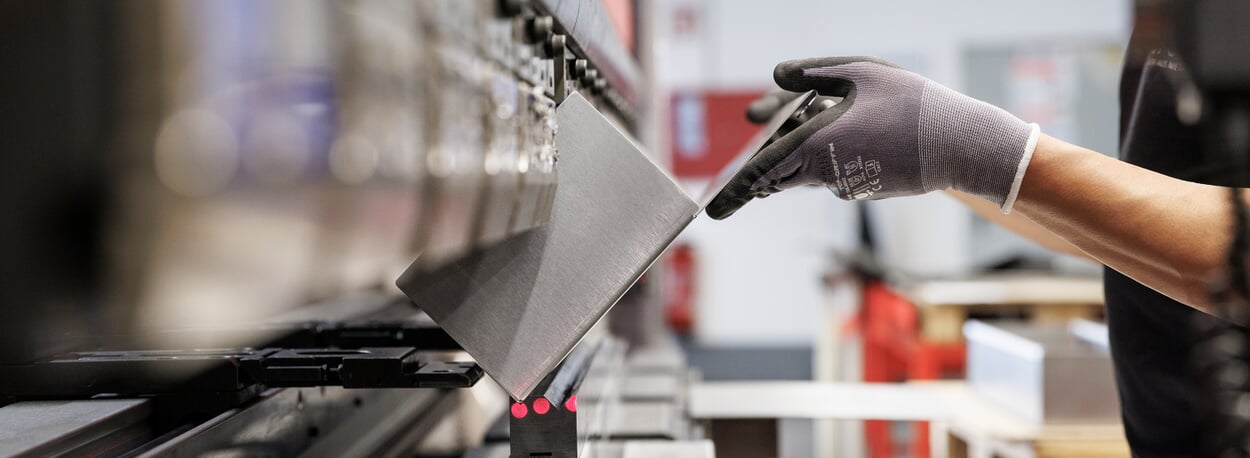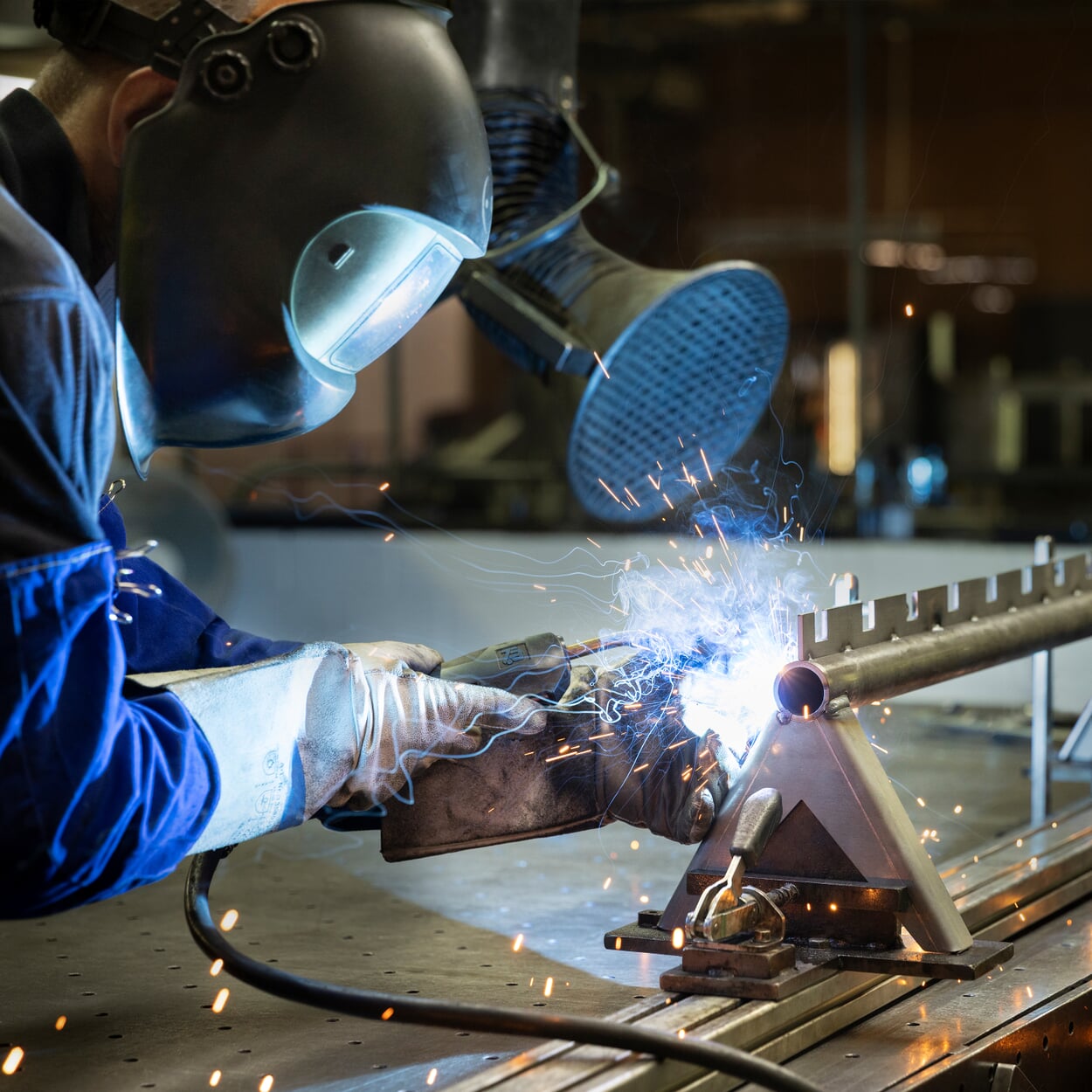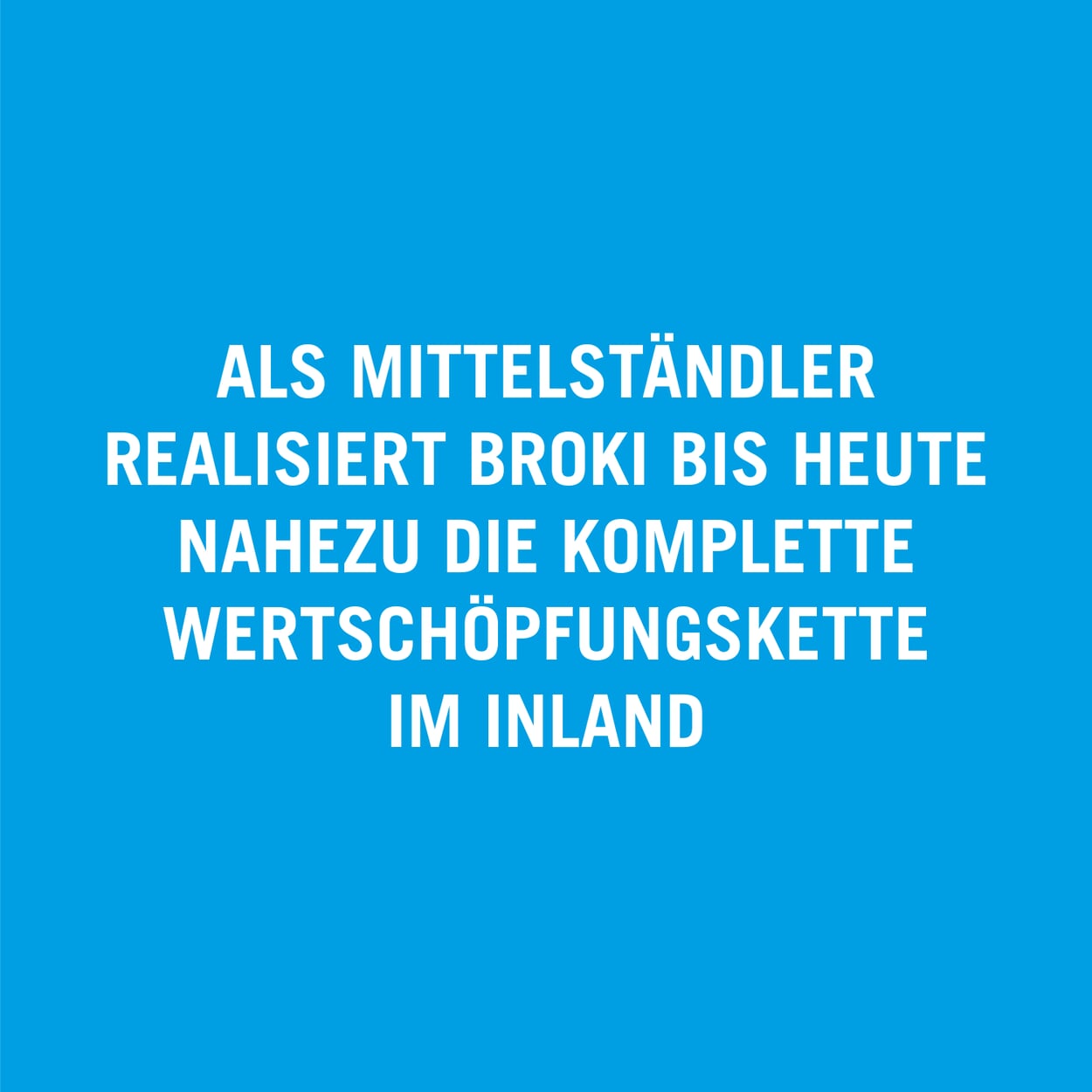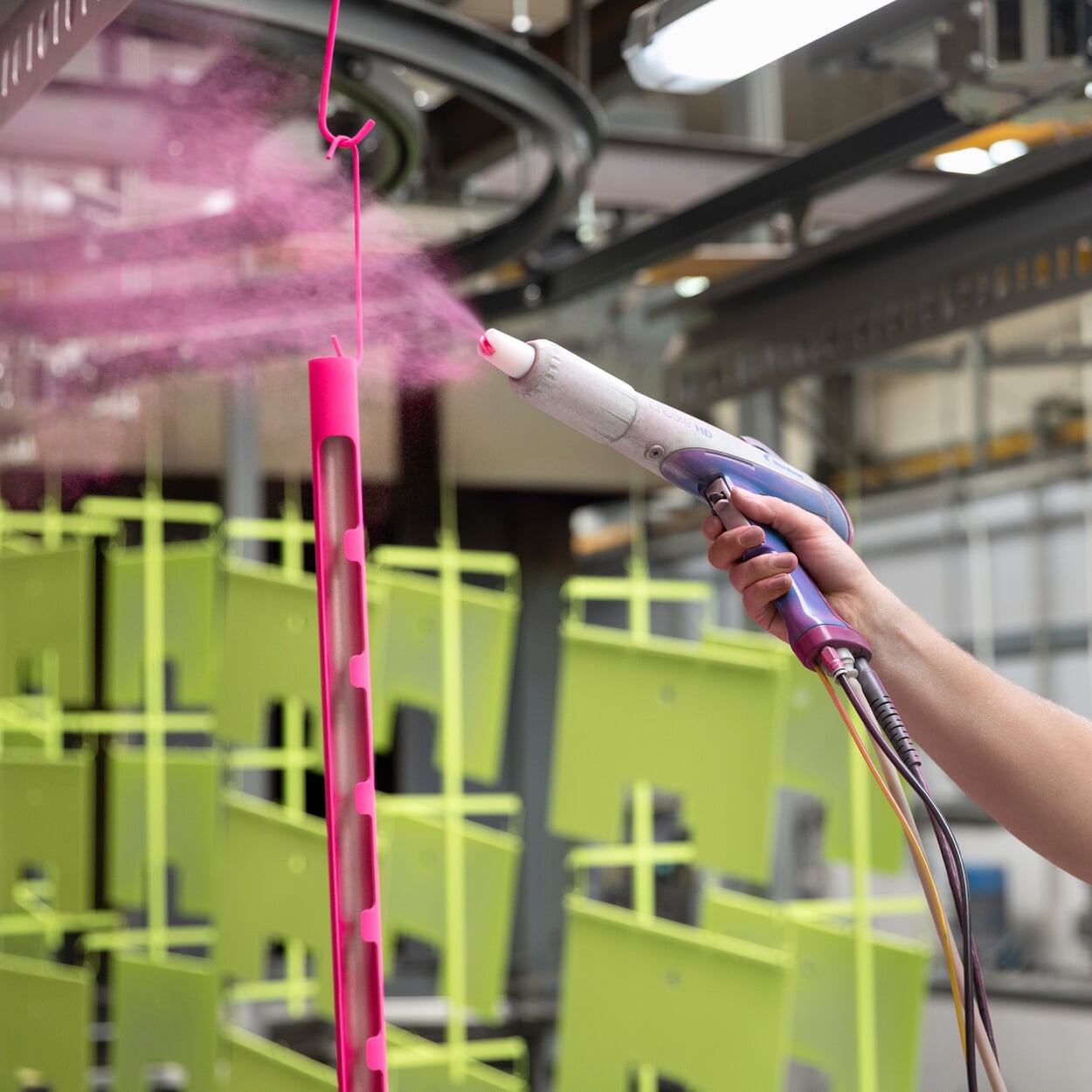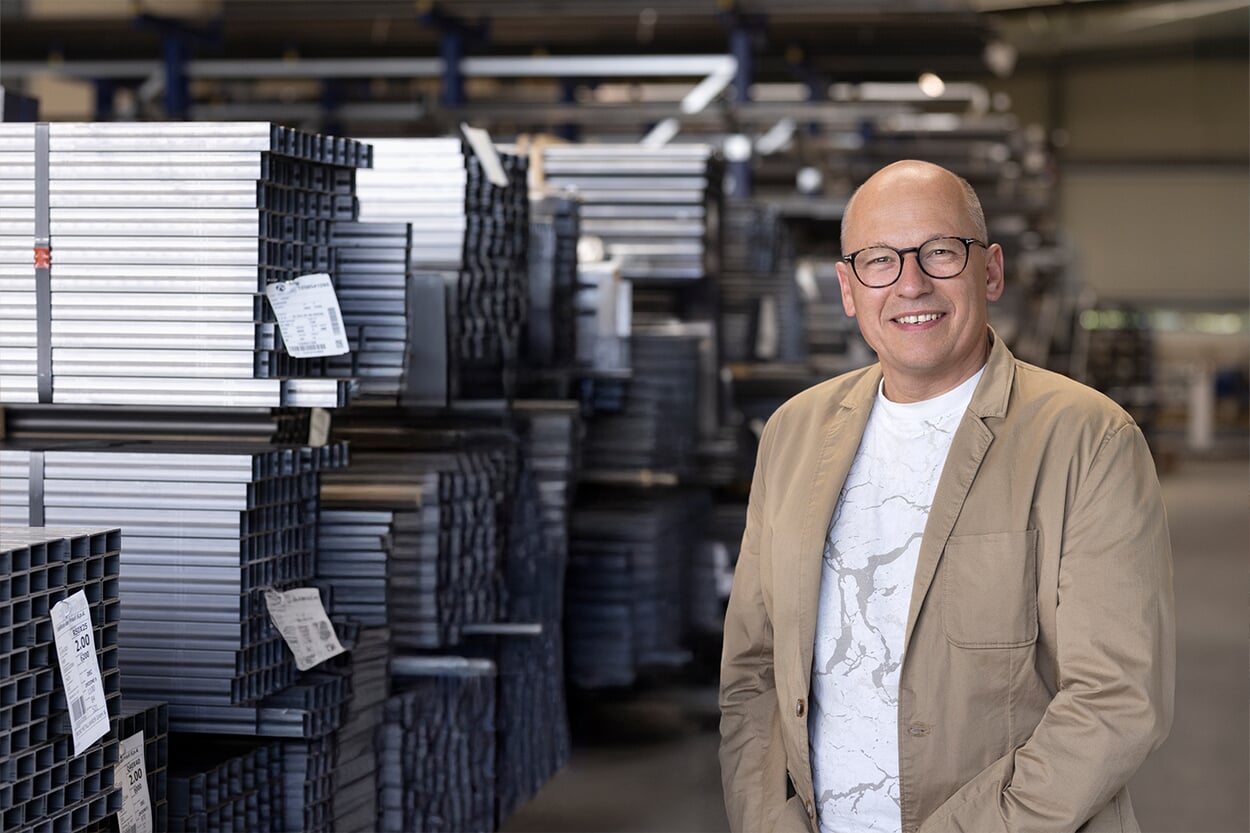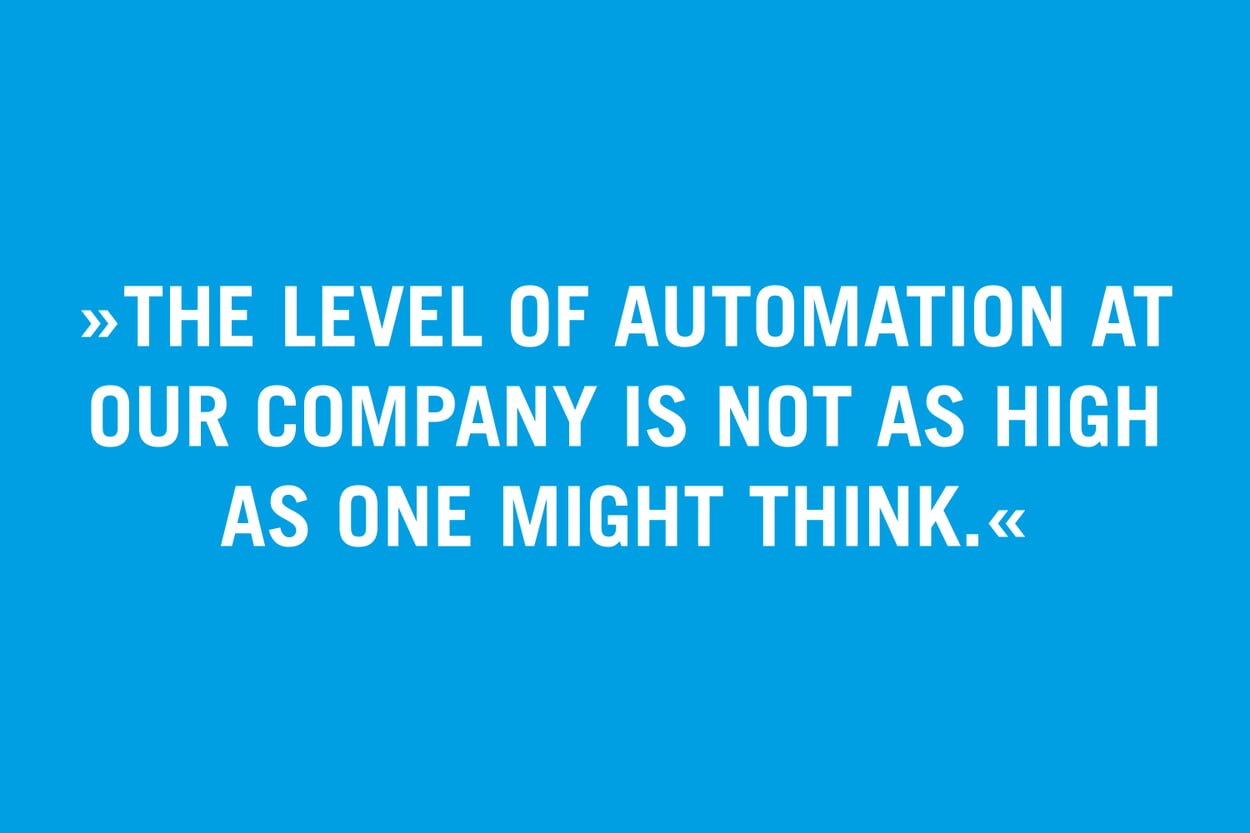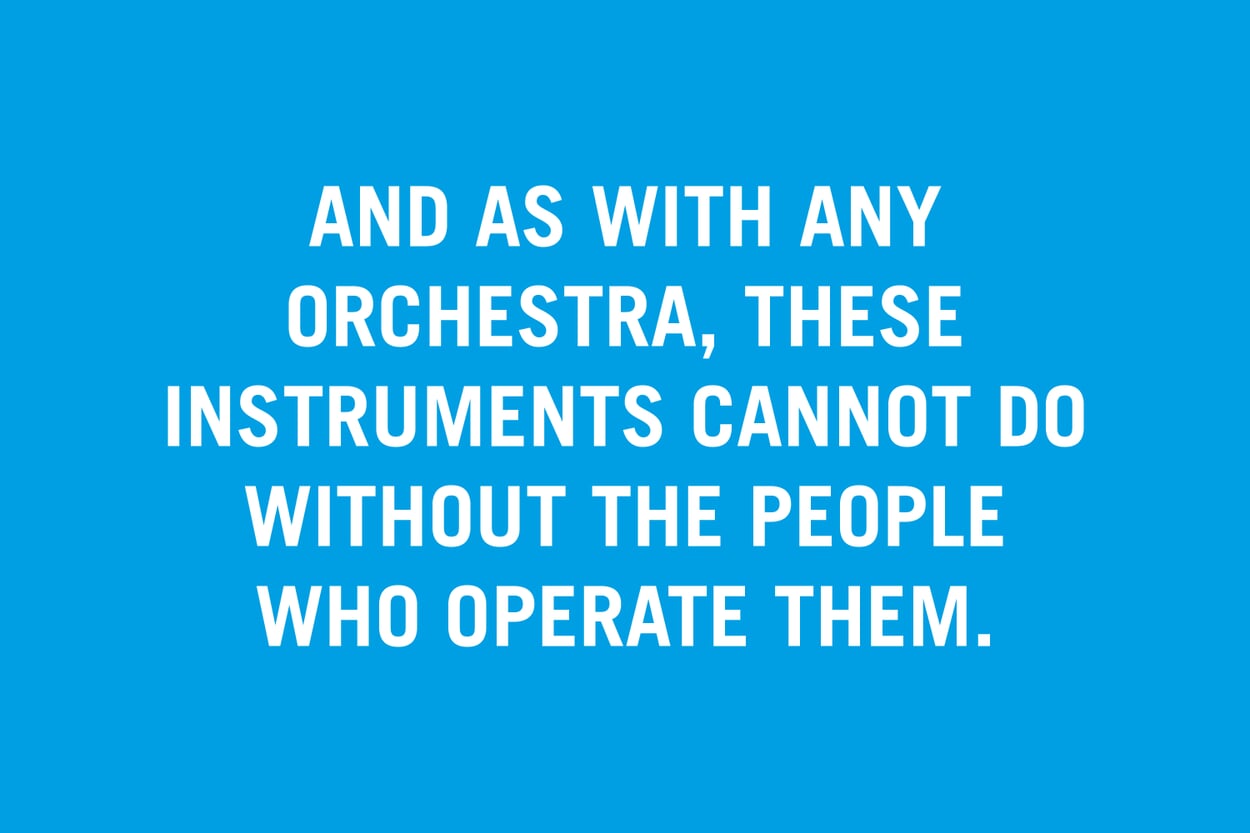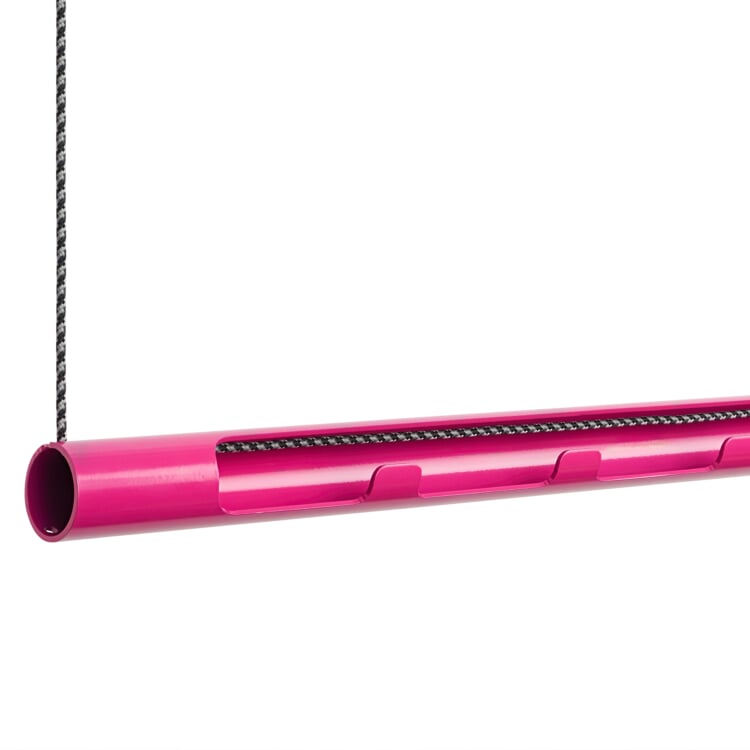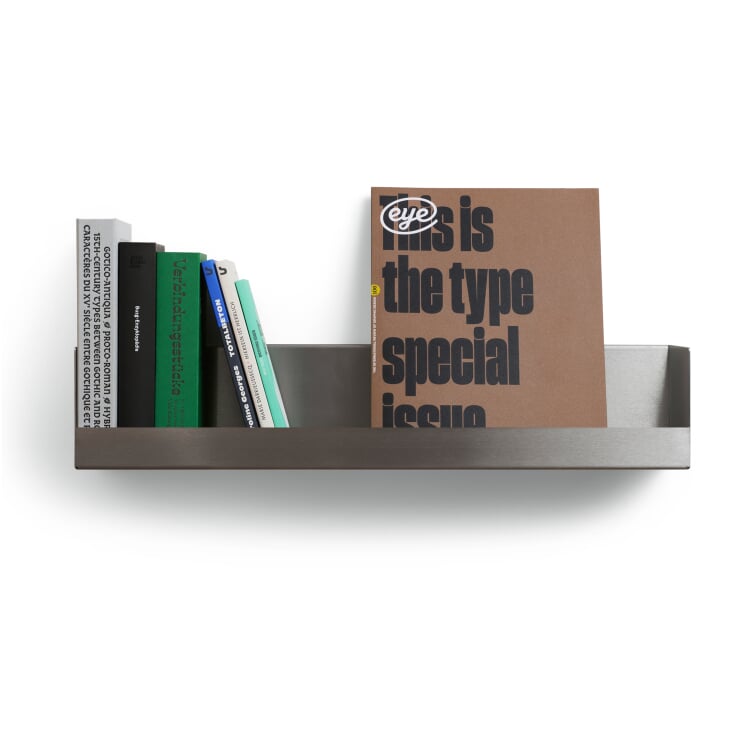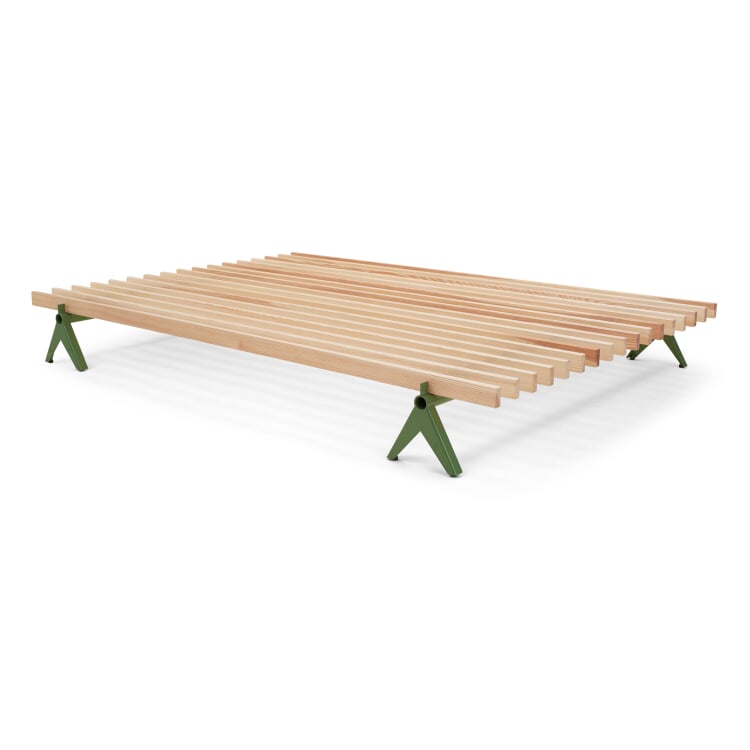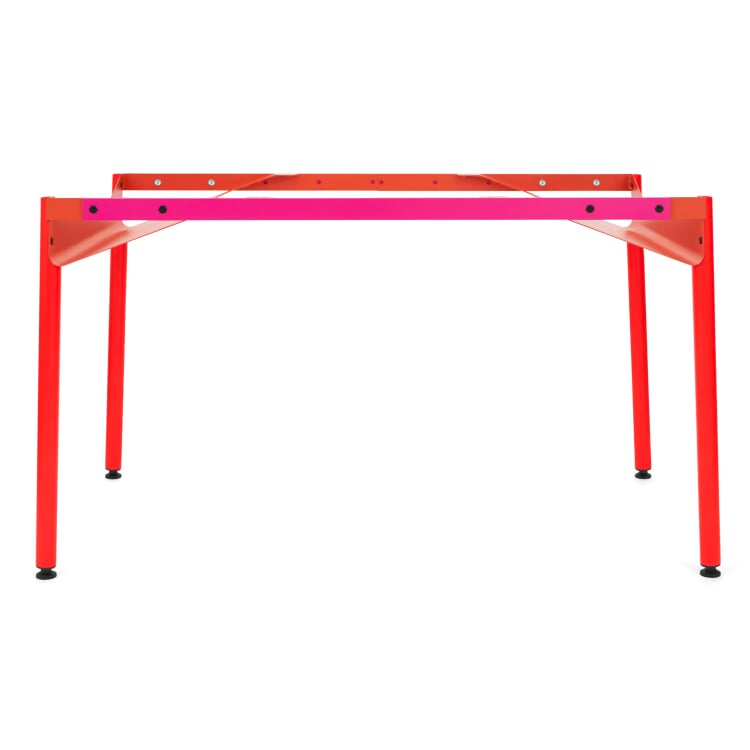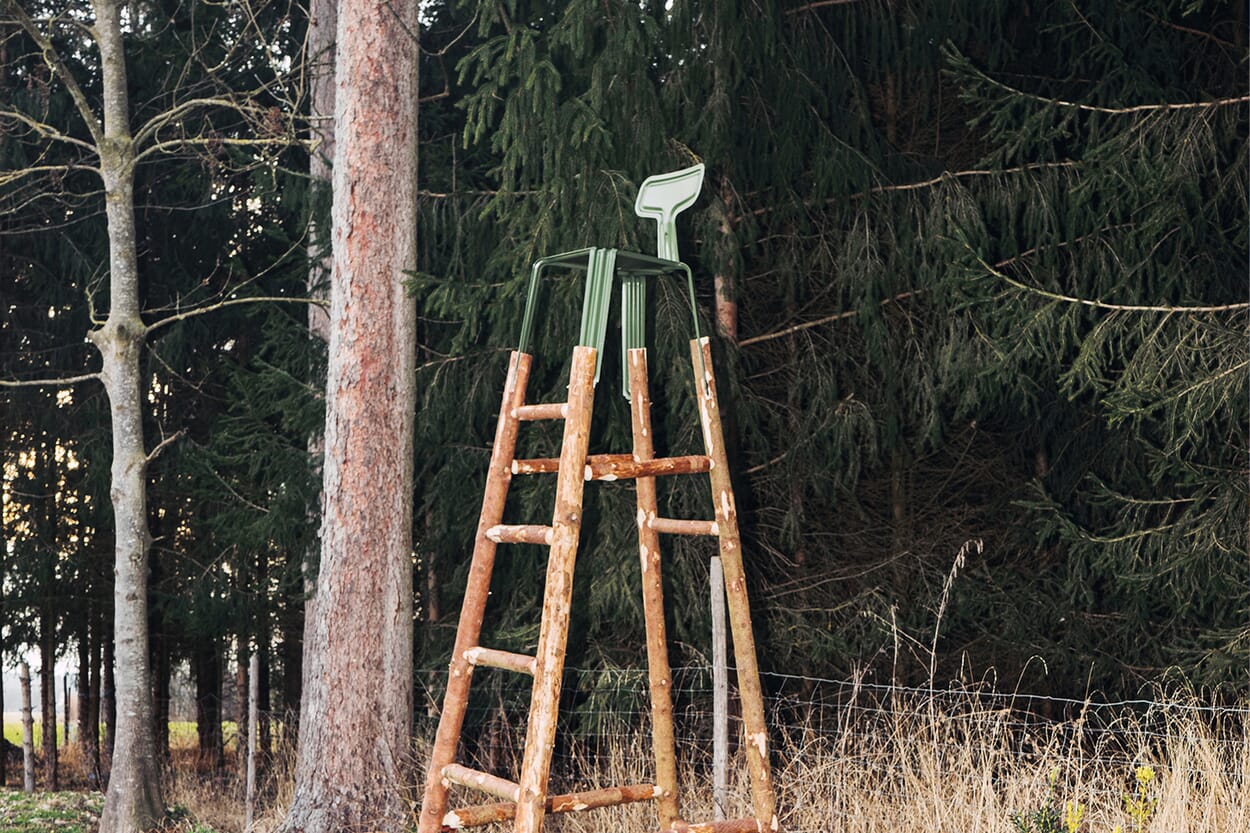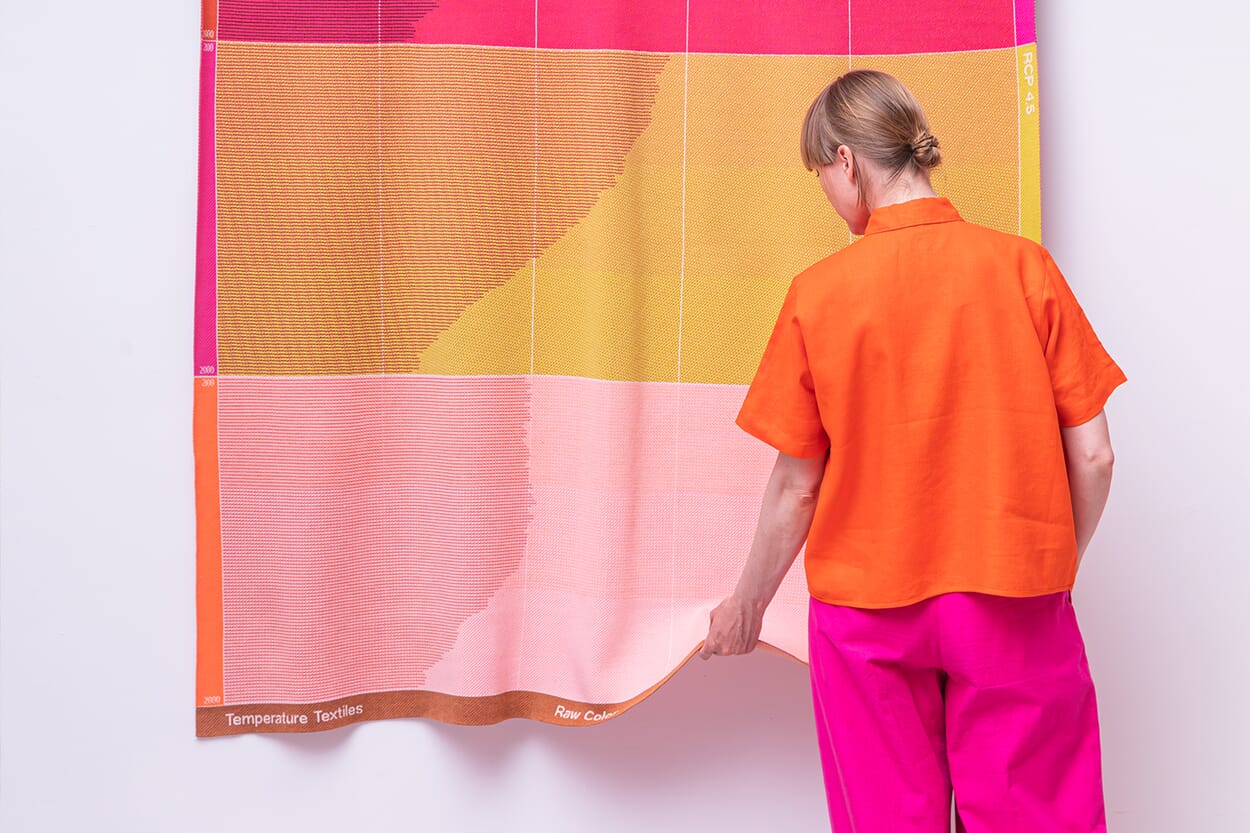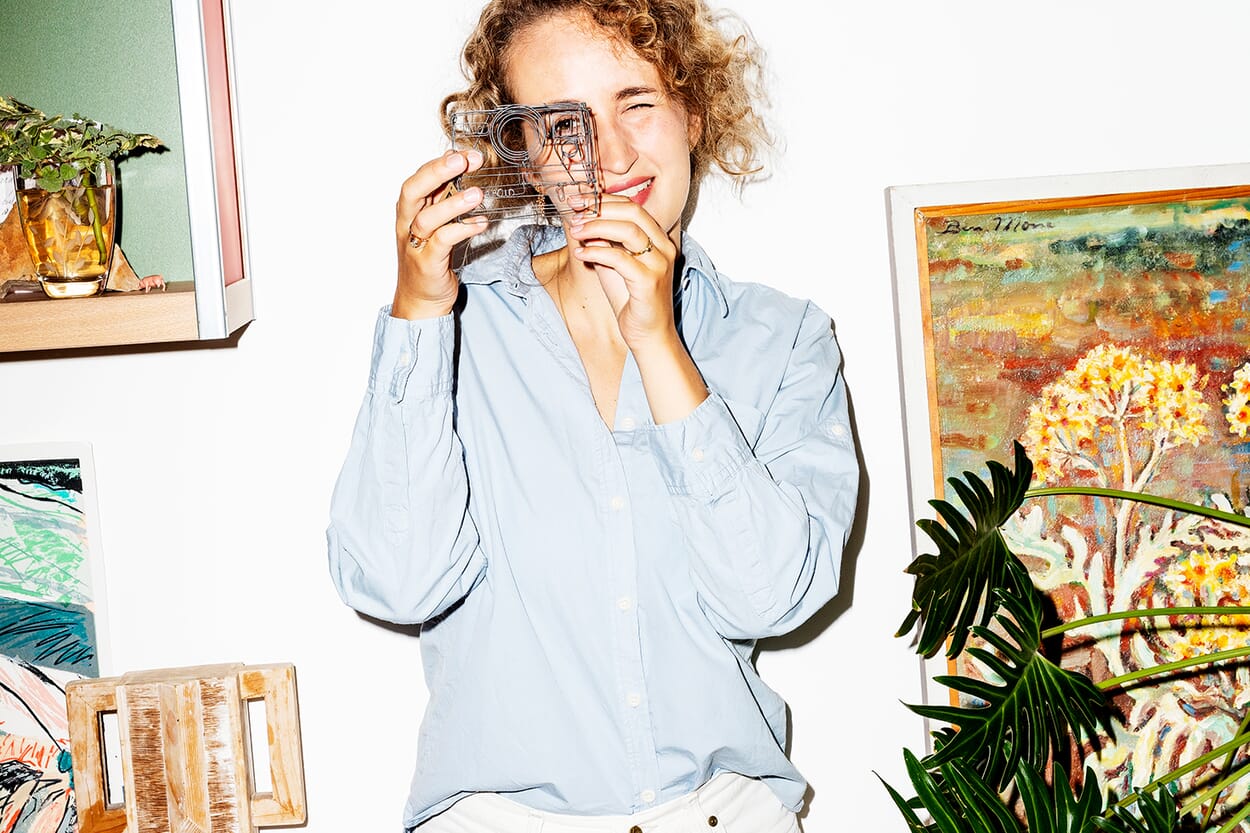In time with the press brakes
**The beat of the machines meets the expertise of the people: metal is welded, drilled, cut and ground at Broki in Menden. A visit to the workshops of the metal construction company, where MAGAZIN products such as SIMPLON, BOKS and ERIK are also manufactured **
Text: Jochen Overbeck
Photos: Martin Tervoort
No, the laser welding machine doesn't actually look like a conventional welding machine. At least not like the devices we know from conventional craft businesses. It is smaller and the flying sparks are more discreet. When the welder ensures that the MAGAZIN wall shelf BOKS can hang in kitchens, corridors or above desks in the not too distant future with calm and precise movements, his work with the hand-held laser is more reminiscent of a clean medical procedure. Perhaps: a visit to a very good dentist who needs to do a quick drill. A few minutes earlier, Guido Bronold, owner and Managing Director of Broki, explained exactly what the advantage of the new precision device is: "The laser welding device has only been on the market for two or three years as a CE-certified device. Its speed is worlds above that of conventional welding machines. The seams remain extremely fine because the arc strikes with pinpoint accuracy - as a result, the surrounding material hardly heats up and distortions are significantly reduced."
We are in Menden, a town of 50,000 inhabitants in North Rhine-Westphalia, which is often referred to as the gateway to the Sauerland region. Anyone traveling by Deutsche Bahn will quickly understand why. The journey to Menden slows down: Whereas half an hour earlier, the industrial cities of the Ruhr region were still passing by the carriage windows, now it is lush green meadows with small rivers meandering through them. At the same time, manufacturing has a long tradition in the region: ore mining and iron and metal processing have shaped the area for centuries. Needle manufacturing was already flourishing in Menden around 1700 - at one time around 300 needle makers worked in the town. With industrialization, small forges became factories, and rolling and wire mills were established along the Hönne. The proximity to the Ruhr area brought advantages: Coal from the Ruhr area fueled the furnaces; railroads and roads accelerated transportation. Today, the Rödinghausen Estate Industrial Museum tells the story of this history.
Flying sparks: Welding work on a SIMPLON bed frame
Precision work: more complex workpieces are powder-coated by hand
When the founding generation flipped the switch for the first time on April 1, 1973, they were continuing a legacy rooted in the region. The company had 20 employees in its early years. Since 2001, the second generation - Guido Bronold and Wolfgang Kissmer - have managed the company. Kissmer retired from the company three years ago and since then Bronold has been at the helm alone. Steel parts for shopfitting were the bread-and-butter business in the first decades. However, production diversified over the years. "Also because our machinery simply got bigger," explains Bronold.
It is therefore a success story that Broki has written over the years, and one that is as highly modern as it is regional: as an outstanding German medium-sized company, the company still realizes almost the entire value chain domestically - from the initial cutting of the raw sheet metal to the ready-to-assemble result. The entry into laser technology in particular was a game changer: "Of course, this has also opened up opportunities for us in other areas. For example, we make parts for door fittings, the rail vehicle industry, lights and agricultural machinery. And furniture and furniture parts."
What leaves the production halls in the small industrial estate on the outskirts of the city is sometimes just a few centimetres in size, sometimes up to 5 meters long. Sometimes a single piece is produced, sometimes a series of several thousand. Some things are invisible to the end customer because they are installed by another company - especially in shopfitting - while others are the product itself. 130 employees ensure that everything runs smoothly: They laser sheet metal, bend pipes, coat surfaces or weld. Others sit at a computer screen, translating customer requests into a design or controlling the individual stages of production from the office. Broki generates the energy required for this with a photovoltaic system and its own combined heat and power plant. The electricity that still has to be purchased is green electricity. The next generation is secured with apprentices in five professions - such as technical product designers, process engineers for coating technology or assembly technology specialists.
Broki has been working with MAGAZIN since 2016. Some products, such as the elegant, slender BOKS steel shelving unit, the minimalist KARLA wardrobe or the self-confident, sulphur-yellow ERIK table frame, are manufactured entirely in Menden. For others, such as the HANS bed, the FIP shelving unit or the P100 wardrobe family, it is the metal parts that are worked on here. These then set off on their journey, some to a woodworking company, some to the MAGAZIN central warehouse.
Back to the production halls. We now walk past the Broki cycle generators: press brakes! Bending machines! Turret punching machines! New is the edge rounder, which ensures that the micro burrs that automatically occur when cutting steel disappear - this is particularly important in furniture production. Sometimes in seconds, sometimes in minutes, the impressive machine park spits out its metal parts. The degree of automation varies, but all the machines have two things in common: first of all, they generate a noise that, taken together, sounds like an industrial symphony. The pipes, which tumble out of the pipe cutter, which also works with a laser, at regular intervals, set the beat. Cutting, milling and grinding provide the soundscape.
And as with any orchestra, these instruments cannot do without people to operate them. After all, we are not dealing with a production line in which one work step automatically leads to the next: Rather, there are individual stations where work is sometimes done with more, sometimes with less machine support. "Our level of automation is not as high as you might think. On the contrary, the human factor plays a very important role," explains Bronold.
Humans are particularly indispensable where flexibility is required. For example, when it comes to drilling threaded holes, but also for powder coating. The paints are stored in a separate room. Large buckets full of powder in all facets; from RAL to special colors, everything is possible. Once the exact shade has been determined, the sheets or pipes to be coated are hung on a kind of chain. This pulls them through the system at roughly walking pace. First it goes to the degreasing zone, spray nozzles mist the parts. In the next step, a washing curtain rinses them off before hot air brings them up to operating temperature in the drying area. Then the paint is applied - sometimes automatically, sometimes by hand - before the curing oven takes over. At 180 degrees, the powder gels, flows like glass and cross-links with the steel. After two and a half hours, each component arrives back where it started - in a perfect coat of paint.
Our tour ends in the hall where the products are packaged. Concentration is required between large stacks of cardboard boxes, especially for the MAGAZIN shipments. After all, when a parcel is sent directly to the customer, screws and product information often have to be included, so nothing must be missing. The final check is also important: "Every part is checked before it is packed," emphasizes Guido Bronold - but this check actually starts earlier. "During development, we build samples, check, rebuild and check again until everything works." The rigor varies depending on the target group and area of application: "A paint defect on a piece that end customers see every day is obviously not an option."
Produced at Broki
Wardrobe Karla, RAL 4010 Telemagenta
KARLA is a coat rail that hangs freely from the ceiling. The special feature: the tube is partially cut into and has hooks at this opening, which can be used separately from the usual hangers. A MAGAZIN product - developed and produced by MAGAZIN.
Boks wall shelf, stainless steel
BOKS for books, tools, kitchen utensils and hallway clutter. In this version made of stainless steel with an industrial look. This shelf is solid and compact, can be used individually, but also several times on top of or next to each other. A MAGAZIN product - developed and produced by MAGAZIN.
Simplon bed - 140 cm, RAL 6011 Reseda green
Two steel beams, finely sanded pine wood slats, simply plugged in, quickly assembled. Clear in form and function, stowed away to save space. Available in various colors and many widths - timeless and well thought-out. A MAGAZIN product - developed and produced by MAGAZIN.
Zehdenicker table frame
The ZEHDENICKER table frame combines stability and elegance, is flexible in width (135-210 cm), offers clever shelves and stands securely thanks to its adjustable feet. Quick to assemble, no wobbling, no rocking. A MAGAZIN product - developed and produced by MAGAZIN.
More designers and manufacturers
Furniture enthusiasts should have made a pilgrimage to Aschau in Chiemgau at least once in their lives: The Moormann company, known for the FNP shelf and other unusual furniture, is based there in an idyllic mountain landscape. It's worth staying longer!
Raw Color has color in its name - and a love of honest and good materials in its heart. The Eindhoven-based design duo Daniera ter Haar and Christoph Brach work across the boundaries of creative professions and combine graphic, exhibition and product design with color as a design element.
When textile factories dye yarns, they often produce more than they need - just in case. This results in so-called overproduction, yarns that are not needed after all. But what to do with it? Dutch designer Foekje Fleur has an idea.

